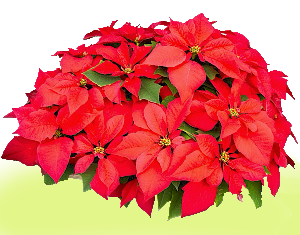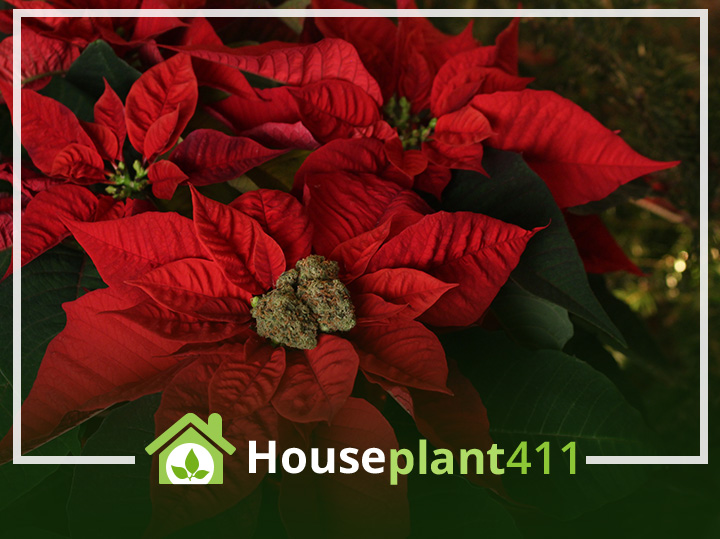We’ve all seen the poinsettias arrive at grocery stores, garden centers, and big box stores looking absolutely beautiful and then, a few days later, looking like they needed to be thrown out. This isn’t because they’ve been neglected, it’s because they’ve been over-watered and are not getting enough light. A Poinsettia is part of the Euphorbia family and its leaves should be soft and flexible before you water. The plant should fell light when you lift it. When poinsettias are over watered, green leaves fall off and you’re left with ugly bare stems that have a few red bracts at the top. If your poinsettias already look like this go outside, cut a few small branches off of a fir or pine tree, and fill in the bottom of the plant. It’s an easy way to do a quick makeover.
Follow these simple care instructions, and you’ll have lovely poinsettias throughout the holiday season and into the New Year.
Light: Poinsettias need bright indirect light but no direct sun. The light from a north-facing window is not adequate. If you place your poinsettia close to a window, be sure none of the leaves are touching the glass. Poinsettias are easily damaged by the cold.
Water: Allow at least the top 50% of the soil to dry out and the plant to droop slightly before watering. (I like to water from the bottom so the plant absorbs only the amount of water it needs.) Being careful with your water prevents root rot, green leaves falling off, and bare stems. Severe under-watering, when the plant drastically droops, causes both green and colored leaves to fall off. Avoid getting water on the leaves and “flowers.” Water droplets cause unsightly white marks on the foliage.
Fertilizer: It is not necessary to feed a poinsettia when it is in “bloom.” Fertilize monthly in the spring and summer once the plant has finished flowering and you have pruned it back.
Temperature: Poinsettias last longer and look better when the temperature is between 65°-70°F (18.3°-21.1°C) during the day and about 60°F (16.6°C) at night. Temperatures that are too hot or too cold damage the leaves and cause leaf drop. Keep Poinsettias away from drafty doors and windows, fireplaces, heaters, and the tops of appliances that give off heat.
Pests: Whiteflies, fungus gnats, mealy bugs, spider mites. You can see a picture and learn how to treat these plant pests in the Glossary of the website.
Toxicity: Poinsettias, despite all rumors, are only very mildly poisonous. If quite a bit of the plant is ingested, some vomiting, drooling, or sometimes diarrhea may be occur. If the milky sap of a poinsettia gets onto the skin, redness, swelling, and itchiness can develop especially if someone is allergic to latex.
Check out our article on how to get a poinsettia to turn red again next year at: https://www.houseplant411.com/askjudy/how-to-turn-poinsettia-leaves-red-again


